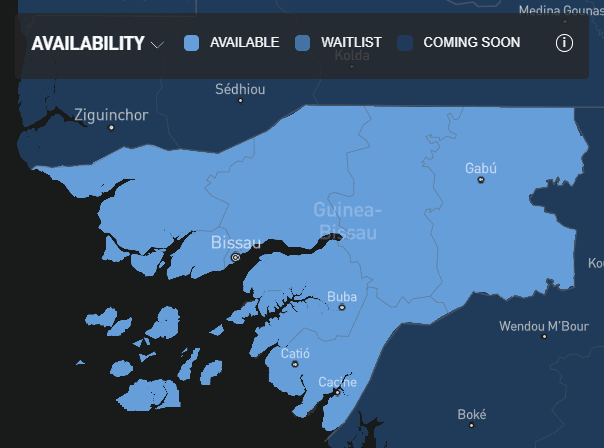Guinea-Bissau, a small West African country long plagued by digital exclusion, has officially joined the Starlink satellite internet network. The development comes after the National Regulatory Authority for Information and Communication Technologies (ARN-TIC) granted full operational approval to the service at the 22nd General Assembly of West African telecom regulators. With this move, Guinea-Bissau becomes one of over 20 African countries now connected via Starlink’s low Earth orbit (LEO) satellite system.
This is a significant milestone for the nation, where nearly 67.5% of the population remains offline. For years, Guinea-Bissau has depended on a fragile internet infrastructure built around just two main operators, Orange Bissau and Telecel, both of which rely heavily on fibre optic connections from neighbouring Senegal and Guinea-Conakry. Recurrent blackouts, poor last-mile connectivity, and minimal rural access have severely hampered digital inclusion and economic opportunity, especially in education, health, and small business sectors.
Starlink’s model bypasses traditional ground infrastructure by using a growing constellation of LEO satellites launched by SpaceX, allowing for high-speed, low-latency broadband even in the most remote locations. The company received provisional approval in Guinea-Bissau back in December 2024, and this new full license comes just months after the service officially launched in Lesotho, Somalia, Liberia, and Niger.’

The long-term impact of Starlink in Guinea-Bissau will depend on local partnerships, pricing innovation, and regulatory flexibility. Whether through collaboration with existing telecom providers or government-backed deployment in schools and health centres. Starlink’s presence could create new pathways for inclusion in a country often overlooked in continental broadband rollouts.
The road ahead: potential and challenges
Despite the excitement, affordability remains a critical challenge. In most African markets, the standard Starlink kit costs around $400 for the terminal, with monthly fees ranging between $30 to $50. For a country where the average monthly income hovers around $120 according to the World Bank, this price point places Starlink far out of reach for many households unless subsidized or shared. There is growing hope that governments, NGOs, or school systems will leverage community Wi-Fi hubs or shared service models to enable access.
Still, the launch is a powerful signal. In a country where connectivity bottlenecks have constrained development, Starlink introduces a disruptive alternative that can reshape how people engage with education, healthcare, and e-commerce. It is particularly well suited for Guinea-Bissau’s rural interior, where mobile coverage is limited and terrestrial internet penetration remains negligible.
As more West African nations consider LEO satellite internet as a viable infrastructure model, Guinea-Bissau now stands as a litmus test for how far-reaching and equitable that model can become.
Get passive updates on African tech & startups
View and choose the stories to interact with on our WhatsApp Channel
Explore




